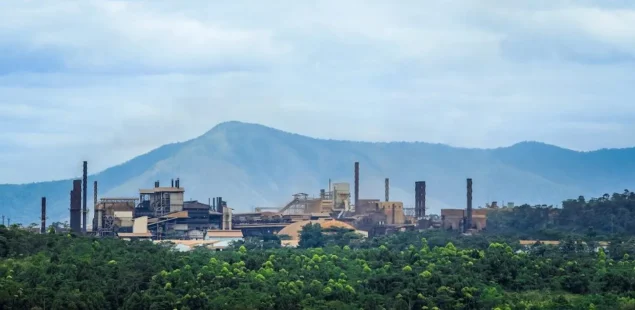
Copper prices edged lower in the immediate aftermath of U.S. airstrikes on Iranian nuclear sites, defying expectations of a geopolitical risk premium for the industrial metal. Official trading data show both London and U.S. copper futures dipped by 0.1% to 0.3% in the first session following the attack, with benchmark contracts on the London Metal Exchange (LME) and COMEX in New York holding within narrow ranges.
Geopolitical Tensions Trigger Flight to Dollar, Not Commodities
The muted reaction in copper contrasts sharply with the sharp rise in oil prices and a broader risk-off move in global financial markets. Investors responded to the escalation in the Middle East by seeking safety in the U.S. dollar, which strengthened by more than 0.3% against a basket of major currencies. This appreciation made dollar-denominated commodities like copper more expensive for non-U.S. buyers, directly pressuring prices lower. Gold and other metals also retreated as haven flows favored the dollar over physical commodities, reflecting a broader market focus on the potential for slower global economic growth rather than immediate supply disruptions.
Supply Chain Unaffected, No Shock Premium
Market analysts note that neither Iran nor Israel is a significant producer or exporter of copper, and the region accounts for less than 2% of global copper output. As a result, traders did not price in a supply shock premium for copper, unlike oil and shipping markets, which face direct threats from potential Iranian retaliation and possible disruptions in the Strait of Hormuz. The copper market’s reaction has been shaped by the absence of any immediate threat to supply chains and the perception that the conflict, while serious, does not yet pose systemic risk to industrial metals logistics.
Technical and Fundamental Headwinds
Technical analysis supports the narrative of consolidation. Daily and four-hour copper charts show prices trading in a narrow band, with the Relative Strength Index (RSI) near neutral and the Moving Average Convergence Divergence (MACD) indicator flat. Bollinger Bands have narrowed, signaling low volatility and a lack of directional conviction. Trading volumes have remained subdued, with no evidence of speculative buying or panic-driven selling.
On the fundamental side, copper prices remain under pressure from a projected global surplus for 2025. The International Copper Study Group forecasts a surplus of 289,000 tonnes this year—more than double last year’s figure—driven by rising mine supply from new and expanded operations in the Democratic Republic of Congo, Mongolia, Russia, and China. Inventories are rising in the U.S., and Chinese demand growth has slowed after a strong start to the year, further weighing on prices.
Market Outlook: Waiting for a Catalyst
The market’s response reflects a pragmatic approach: without a clear threat to copper supply or a surge in industrial demand, traders see little reason to bid prices higher. Most forecasts now expect copper prices to remain rangebound in the near term, with technical resistance and surplus fundamentals anchoring the market. Analysts at major banks have revised their price targets downward for the third quarter, citing the combined effects of a stronger dollar, surplus fears, and only modest demand growth from China.
While the long-term outlook for copper remains supported by the global energy transition and infrastructure investment, the near-term picture is dominated by macroeconomic caution and a lack of immediate supply-side catalysts. Unless the Middle East conflict escalates to directly threaten copper logistics or triggers broader economic disruptions, copper prices are likely to remain subdued, with traders content to wait for a more direct catalyst before making significant moves.



